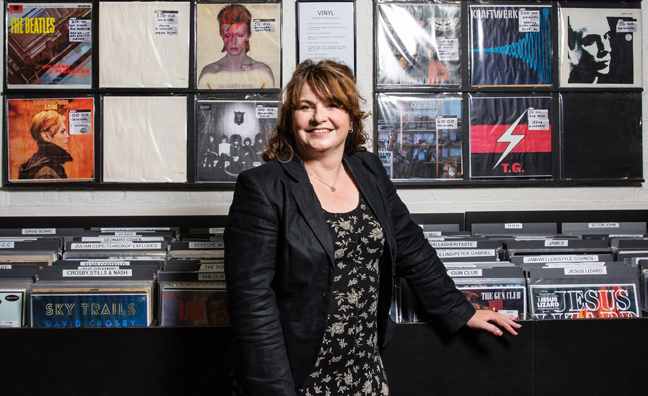Despite a difficult Christmas for physical music, which culminated in HMV entering administration, ERA reported overall revenues up 9% in 2018.
Following her analysis of HMV’s current problems, here CEO Kim Bayley talks Music Week through the ups and downs for the biz last year…
How significant were streaming subscriptions in these figures?
“Streaming is about 38% up year-on-year so that’s really driving the growth, it’s gone through the £800 million barrier now. It’s the paid-for subscriptions that are really driving it.”
Can streaming continue to grow and offset the physical decline (down 16.6%)?
“It obviously has picked up the slack for the last few years. We’ve seen six consecutive years of growth in entertainment overall, which has all been driven by streaming revenue. There’s certainly a way to go. When you think about the number of consumers that actually have a paid-for subscription, which is only running at about 20% of the population, there’s plenty of headroom for that growth to continue.”
TV streaming is more than double music streaming in revenue terms. What can the music industry learn from TV?
“I think sometimes the other industries can learn from the music industry, it is doing a really good job of making music available to everyone in multiple formats. In the digital space what they need to get to is a variety of price models, which is what they have in games and video. The Sky model is such that there are basic subscriptions from £6.99 a month right the way up to really expensive subscriptions. So for music it’s about creating that diverse streaming model rather than a one-size-fits-all.
“[But] is a very different market because TV is huge compared to music, so one would expect that digital video market to be similar. Actually, the growth in that market was lower than it was in music – about 26% revenue growth compared to 38% in music.”
It’s the paid-for subscriptions that are really driving growth
Kim Bayley
Do the figures show that physical music is still important for key releases?
“Yeah, if you look at the Top 20 for music and video, physical still dominates. If you want to have any kind of mass market proposition that appeals to those people who might just buy a few products a year, then you do need a physical release. The Greatest Showman was two-thirds physical, so that really shows how important that is to drive those sales.”
The download market has slumped 25% year-on-year – is that sustainable?
“We’ve obviously seen a 25% decline this year in music downloads, on top of a massive decline last year. So it’s there as a niche product, almost like vinyl. There are probably still some heavy download consumers who will continue to do that for a little while, but it’s not a mainstream proposition any more. If you’re in that digital market, then why not subscribe to an all-you-can-eat service, which isn’t costing you an awful lot more than buying a few downloads a month?”
Is vinyl still contributing to the overall growth?
“It is playing its part but obviously this year it was very minimal growth, only about 1% year-on-year in the vinyl market, which is probably as much due to the quality of product and the poor high street [sales] as much as anything else.”
To read Music Week’s physical music round table feature subscribers can click here.
For the biggest-selling singles and albums of 2018 click here.









